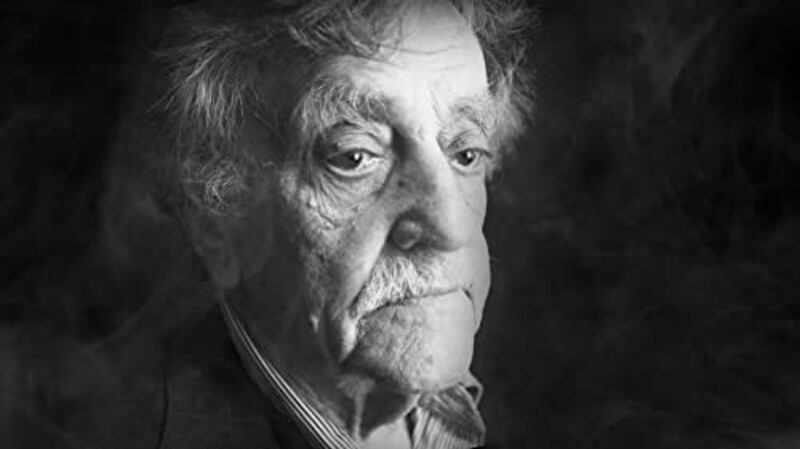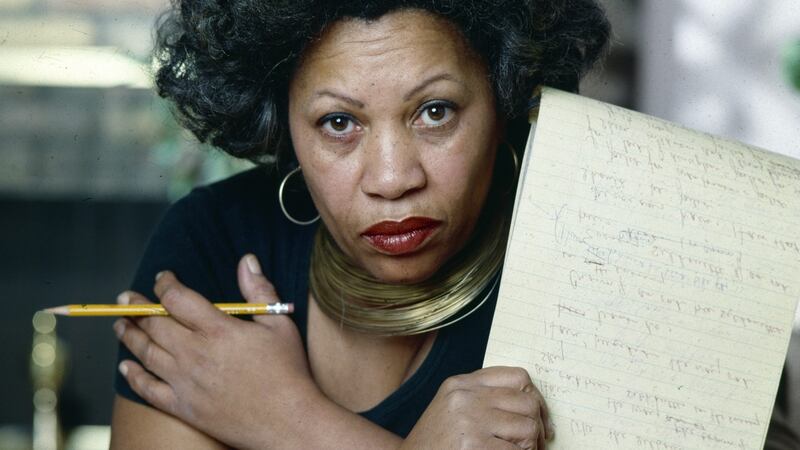I’ve always been a prolific reader. As a child I’d stuff my holiday suitcase with two dozen books, preferring to wear the same T-shirt for a fortnight than risk running out of reading material. These days I never leave home without two books: one to avoid the temptation to doom scroll, the other in case an unforeseen accident/kidnapping/incarceration leaves me with excessive amounts of time to kill. Most years I read about 300 books. When people call this figure intimidating, I reply, “it’s my job to read”. If I don’t spend twice as much time reading as writing, my words seem to fall flat on the page.
Despite my best endeavours I still feel hideously under-read. I’m not great on historical fiction or sci-fi. I’ve yet to tackle the big Russians. Though I’ve read the first third of Ulysses three times, I understand this isn’t the same as finishing the blessed thing. I’ve also become increasingly aware of a western-centric bias to my reading. My own books have taken me to festivals around the world. I’ve met incredible writers from backgrounds wildly different to mine. I’ve come to feel ashamed of my own ignorance and simultaneously eager to read more of the world.
A few years ago, I conspired with a handful of readers equally eager to expand their bookish horizons. We started Mexico and Below, a special book group that meets in No Alibis bookstore. Each month we discuss work in translation from countries below Mexico. I’ve discovered so many new writers through this group alongside fantastic presses like Charco, Fitzcarraldo and Pushkin who work tirelessly to ensure writers who don’t write in English have platforms to share their work. The Mexico and Below community is eclectic, warm and full of readers evangelical about translated literature. It’s changed the way I approach reading and had a huge impact on my writing practice encouraging me to rethink story structure, language and how cultural context informs my work.
As is my practice every year, I made a schedule for each reading month — approximately two Vonneguts to every Morrison
My second reading project is more personal. For the last five years I’ve been selecting a dead writer and reading the entirety of their work chronologically in a year. I’ve read Brian Moore, Agatha Christie, Colin Dexter, Graham Greene and most of Virginia Woolf. I’m afraid Woolf broke me. I gave up after Mrs Dalloway, happy to admit not every writer is for everyone. I’m four books shy of completing this year’s project: Toni Morrison and Kurt Vonnegut. I purposefully chose to read these two writers simultaneously. Though thematically and tonally diverse, I suspected their novels would speak to each other. They most certainly did. While Vonnegut began his career first with Player Piano, (1952), for a period covering four decades from the ‘70s onwards, they published in parallel. Both address the topic of America as socio-political experiment gone — if not wrong — then decidedly off course.
Dancing with the Stars: ‘I’ve had the best time of my life. I feel super fit,’ chef Kevin Dundon says as he is voted off show
Oscars 2025 red carpet: Ariana Grande sets the standard while Timothée Chalamet stood out in ‘Kerrygold’ yellow
Róisín Ingle puts a Thermomix to the test: ‘I am a convert but there’s one enormous catch’
[ Jan Carson: ‘I cried when I got my Irish passport’Opens in new window ]
As is my practice every year, I made a schedule for each reading month — approximately two Vonneguts to every Morrison — and shared this list on social media so others could read along. Focusing on a single author has proven to be a great way to form online community. Over the years readers from across the world have contributed insightful responses to my reading projects, recommending articles, documentaries and other related reads. By the end of the year, I usually feel like a mini-expert on my writer of choice. I’ve been able to write articles, speak at festivals and contextualise how their writing has affected my own.

Aside from the obvious mind-expanding benefits associated with immersing myself in a single writer’s work, paying close attention to their craft and experiencing the world through their eyes, reading chronologically has bolstered my confidence. Eight books in, I’m still developing as a writer. I’m still wrestling with imposter’s syndrome, yet the current trend seems to be for dazzling debuts and authors who emerge from the womb fully formed. While Morrison began her career with the blindingly brilliant The Bluest Eye, Vonnegut was almost a decade into publishing before releasing Cats Cradle, in my opinion, the first of his truly marvellous books. If the contemporary publishing industry doesn’t give writers time to mature, we run the risk of losing voices like Vonnegut’s along the way.
It’s heartening to realise that even the greatest storytellers grow into their voices and themes. These two writers spent a lifetime circling around the same essential preoccupations: woman and race, (Morrison), war and capitalism, (Vonnegut). No one forced them to reinvent themselves to keep the book-buying market keen. Their novels repeatedly explore the same important ideas, masterfully, in myriad different creative ways, bringing fresh perspectives with each book. I’m leaving this reading year, reassured that my pressing interest in my own community will be fuel enough to keep me writing for at least another half century.
We tend to venerate our great writers, skating over their inferior work to focus on the books that regularly make the Top 100 Novels lists
Somewhat perversely, I also found it encouraging to encounter mediocre work by both writers. There are quite a few clunkers in Vonnegut’s back catalogue; if you’re this prolific you can’t be expected to hit gold every time! Notably, Morrison’s Paradise, the novel proceeding her Nobel Prize win, is a disappointing and muddled read. We tend to venerate our great writers, skating over their inferior work to focus on the books that regularly make the Top 100 Novels lists. This paints an inaccurate picture of the creative process which is, at heart, a journey characterised as much by trying, failing and developing as it is by success, (whatever that means). I have a lot of time for writers who occasionally produce substandard work. I, myself, frequently fall into this camp.
[ The Raptures by Jan Carson: Marian Keyes on a brilliant Northern Irish taleOpens in new window ]
Undoubtedly, my favourite thing about reading dead authors in their entirety is the way each one has a unique resonance with the here and now. During Lockdown, dwelling on the comforting sense of justice and order in Agatha Christie’s novels provided a welcome alternative to a world that felt painfully out of control. In 2022, I was reading Graham Greene during a four-month-long residency abroad. His thoughts on displacement and the outsider helped me navigate a desperately disorientating period of my life. When I decided to read Morrison and Vonnegut, I did not foresee all the horrors 2023 would usher in. However, I honestly can’t think of two wiser or more challenging guides to chaperone me through this troubled year. Arguably, all great literature should maintain a degree of relevance, resonating long after the era in which it was published.
I’m not sure if Morrison ever met Vonnegut outside the confines of my bookcase but I’ve often pictured them in conversation: Vonnegut wisecracking through a cloud of cigarette smoke while Morrison calmly argues back, every sentence a sucker punch of perfectly crafted profundity. What are they discussing? All the big issues of their day, which —sad to say — remain the big issues of our day. Violence. Power and the hateful legacy of colonialism. Toxic masculinity, (though they’d probably have used an alternative term). Class and race and humanity’s ongoing inability to practice basic humanity. What it means to be an American, shaped by a flawed and disintegrating dream. Grace.

If there’s one thing I’ll take from a year of reading these two wise souls in tandem, it’s the realisation that life beyond suffering requires grace. There is no future for the women brutalised by slavery in Morrison’s Beloved and A Mercy, nor any hope for the ruined Dresden, Vonnegut depicts in Slaughterhouse 5, without an intervention of grace-filled humanity. Vonnegut, a one-time honorary president of the Humanist Society of America, frequently invokes the Sermon on the Mount as a mandate for structuring society with compassion, empathy and deep respect. In Beloved Baby Suggs speaks deep healing over her congregation of emancipated and escaped slaves when she calls them beautiful, worthy and dignified. She uses her own experience of pain to bring freedom and joy to those she is ministering to. I don’t think there’s a better exploration of grace in literature. It’s such a holy piece of writing it still makes me weep, even after half a dozen reads.
Both Vonnegut and Morrison understood that a reading public desensitised to the horrors they were describing would require a radical shift in perspective if they were to see the horror through fresh eyes
Much as I’d like to dwell on the hopeful sections of Vonnegut and Morrison, both writers excel at making their readers squirm. Neither shies away from exploring our capacity for evil, both as individuals and communities. Though Vonnegut’s work is characterised by humour and absurdism, his depictions of war are unflinchingly stark. Morrison pulls no punches when she describes an America built upon the exploitation and brutalisation of the black community. Reading their novels, I was reminded of Flannery O’Connor’s response to the question of why she employed the grotesque in her writing: “For the hard of hearing you shout, and for the almost-blind you draw large and startling figures.”
Both Vonnegut and Morrison understood that a reading public desensitised to the horrors they were describing would require a radical shift in perspective if they were to see the horror through fresh eyes. Vonnegut’s absurdism and dark wit are a welcome and arresting antidote to other, drier, more earnest tomes on the futility of war. In novels like Song of Solomon and Beloved, Morrison uses magical realism to remind her readers that even the most marginalised and abused characters are capable of invoking wonder and transcending the temporal realms. When I began writing about the history and culture of Northern Ireland, these two writers gave me licence to experiment with style and tone, questioning the assumption that serious topics demanded a serious, realist approach. It’s been reassuring to revisit my old mentors and find their writing still speaks loudly and provocatively to my own.
There’s a great seam of righteous anger running through both bodies of work. Behind the humour and the beautifully crafted sentences, Vonnegut and Morrison’s prose pulsates with a truth held in furious tension. Humans are awful creatures. Humans hold the keys to their own redemption through acts of empathy, kindness and creativity. These are not writers without hope. If I had to summarise the message inherent within their writing, it would simply be, “do better”, both individually and societally. Or, as Vonnegut puts it in his final novel, Timequake: “You were sick, but now you are well, and there’s work to do.”
These were not comfortable books to read this year. Set against the background of a rapidly fracturing world they made me question my privilege, acknowledging my own culpability in maintaining those systems which marginalise and repress. They helped me see myself in the other and showed me how to write the worst in people without losing my faith in humanity. I’m a little more furious because I’ve spent a year with Toni Morrison and Kurt Vonnegut. I hope I’m a little more compassionate too. In 2024 I’ll be reading James Baldwin and Carson McCullers. I anticipate another uncomfortable year.


















